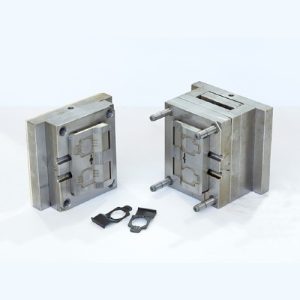 If you want to understand how an injection mold works, first you have to learn the ins and outs of the tool. This is a quick guide for those who want the basics of injection molding tools.
If you want to understand how an injection mold works, first you have to learn the ins and outs of the tool. This is a quick guide for those who want the basics of injection molding tools.
The most common injection mold is a two-plate tool. There are other types of injection molds as well. The two-plate tool consists of two main parts, the injection mold (A Plate) and the ejector mold (B Plate). These plates are attached to platens and held together by a clamping unit. When these plates come together to form the injection mold, there is a natural divide or split called the parting line.
Materials Selection
A critical but sometimes overlooked injection molding tooling design consideration is proper tooling materials selection. The choice impacts several aspects of tool longevity:
• The proper steel grade and hardness properly balances wear and toughness, so tooling components that run together don’t wear out prematurely.
• Steel hardness can also introduce steel brittleness. Harder steel is not a good choice for tooling components subject to side-loading or impact, because if it flexes it will crack.
• Harder steel is required for molding glass-filled material, which can prematurely wear down tooling, including runner systems and gates.
Engineering Considerations
Details matter in plastic injection tooling. Engineers play pivotal roles in ensuring an optimized production process, reduced costs, and unparalleled product quality.
Among chief responsibilities for tooling engineers is:
• Placement of waterlines to maximize cooling and minimize warping.
• Calculation of gate/runner sizing specifications for proper filling and minimal cycle times.
• Determination of the best shut-off methods for tooling durability over the life of the program.
The Injection Mold (A Plate)
The injection mold (A Plate) is the entry point through which molten plastic is transferred from the injection unit to the injection mold. The opening or entrance of the injection mold (A Plate) is called the sprue bushing. The sprue bushing is attached to the sprue, which is a passageway that leads the molten plastic to the runners. Runners are tunnels or channels that connect the sprue to the gates, or the entrances, of the cavity image. Runners lead the molten plastic to the cavity image.
The Ejector Mold (B Plate)
The ejector mold (B Plate) is the exit point through which the plastic product is ejected from the injection mold. Once the plastic product is ready, the clamping unit slides the ejector mold (B Plate) away from the injection mold (A Plate), opening the injection mold. As the mold opens, circular pins called ejector pins push the plastic product off of the injection mold. Of course, injection molds naturally leave marks on the plastic products they produce.
If you’re new to the injection molding process, you’d best leave these decisions to the professionals. Contact Nu-Tech today!